Abstract
1. The effects on respiration and pulse interval of stimulation of the carotid body chemoreceptors before, during and after stimulation of receptors in the nose have been studied in the anaesthetized dog.
2. Stimulation of a carotid body by infusion of cyanide into the ipsi-lateral common carotid artery causes hyperpnoea and either an increase, decrease or no change in pulse interval.
3. Excitation of receptors in the nasal mucosa leads to reflex apnoea or a reduction in breathing, and an increase in pulse interval.
4. When the carotid bodies are excited by the same dose of cyanide during stimulation of the nasal mucosa, the chemoreceptor-respiratory response is abolished or reduced in size compared with the control effect. On the other hand, the chemoreceptor-cardio-inhibitory response is considerably enhanced.
5. The potentiated cardio-inhibitory response of combined chemoreceptor and nasal stimulation could not be accounted for by the change in pulmonary ventilation, arterial PO2 or PCO2, or mean arterial blood pressure.
6. These results indicate that excitation of the nasal reflex inhibits the chemoreceptor-respiratory reflex response but facilitates the chemoreceptor-cardio-inhibitory reflex response. The possible sites of these interactions between the nasal and chemoreceptor reflexes are discussed.
Full text
PDF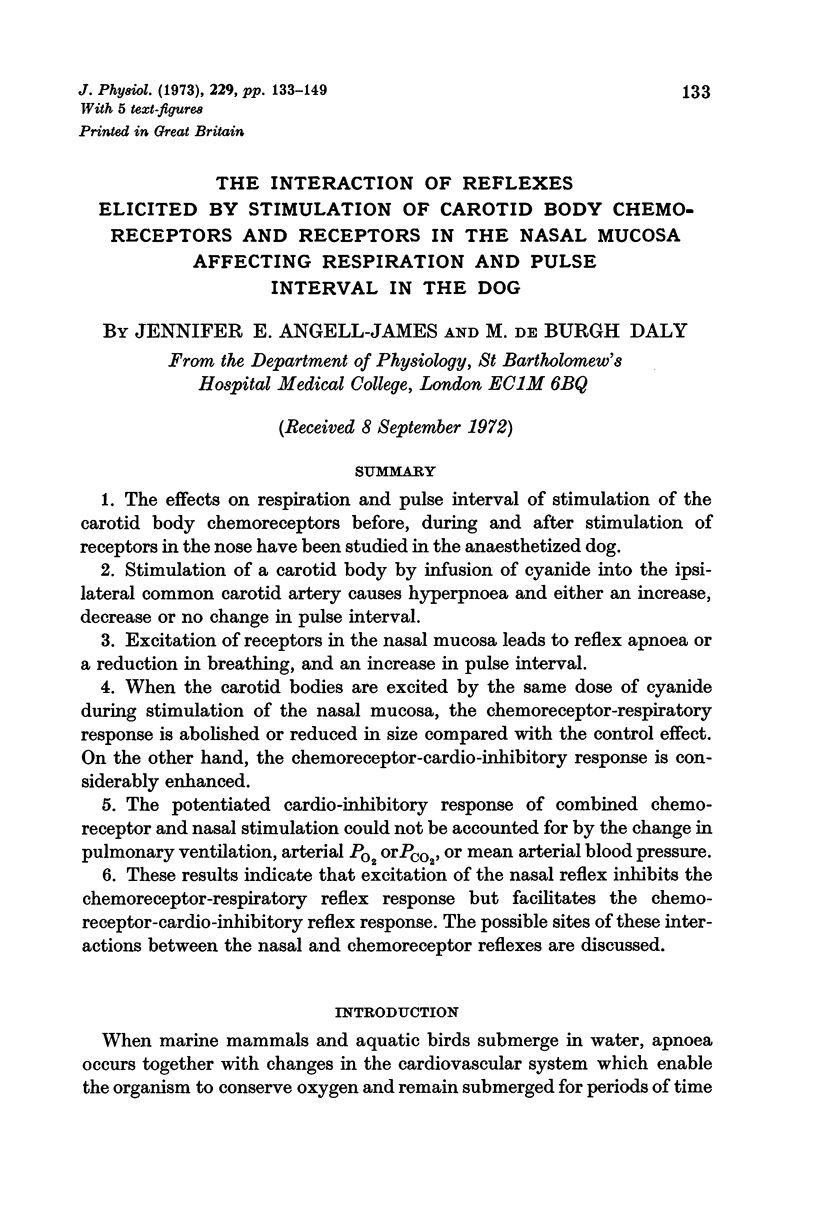
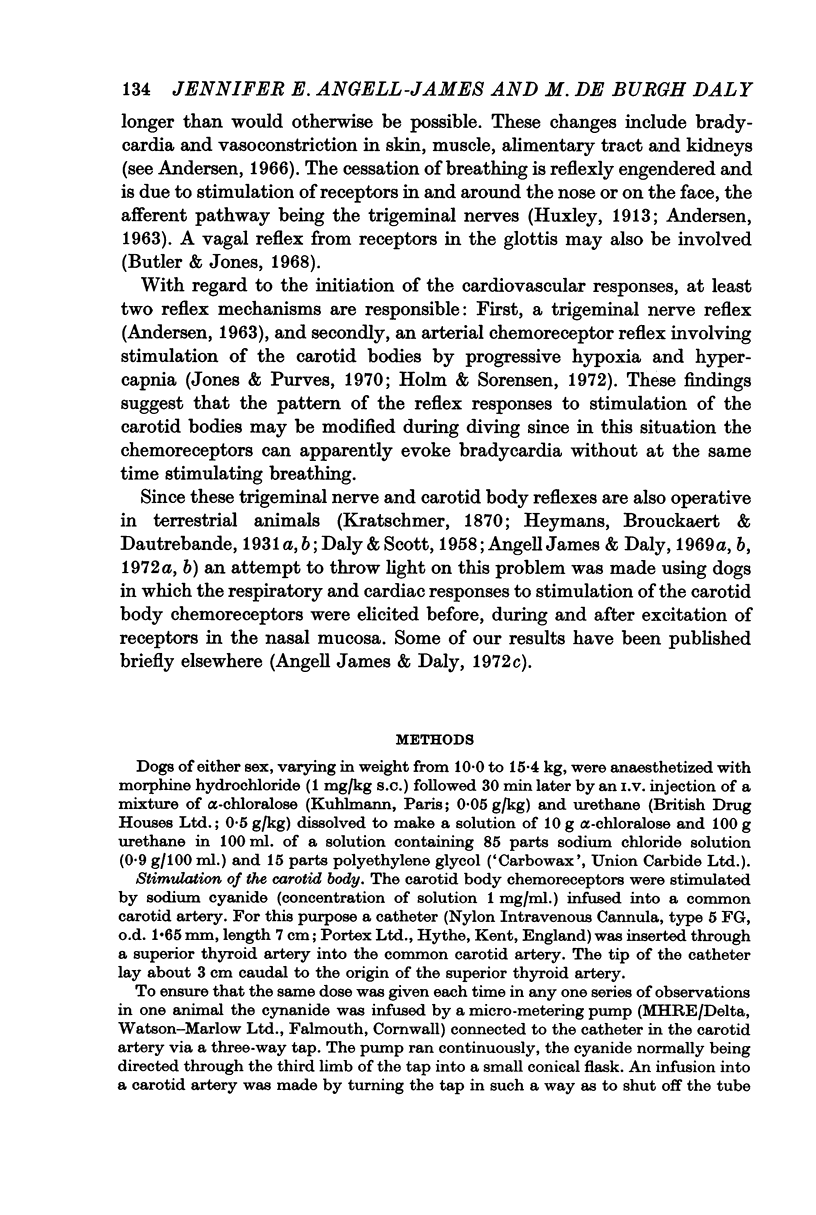
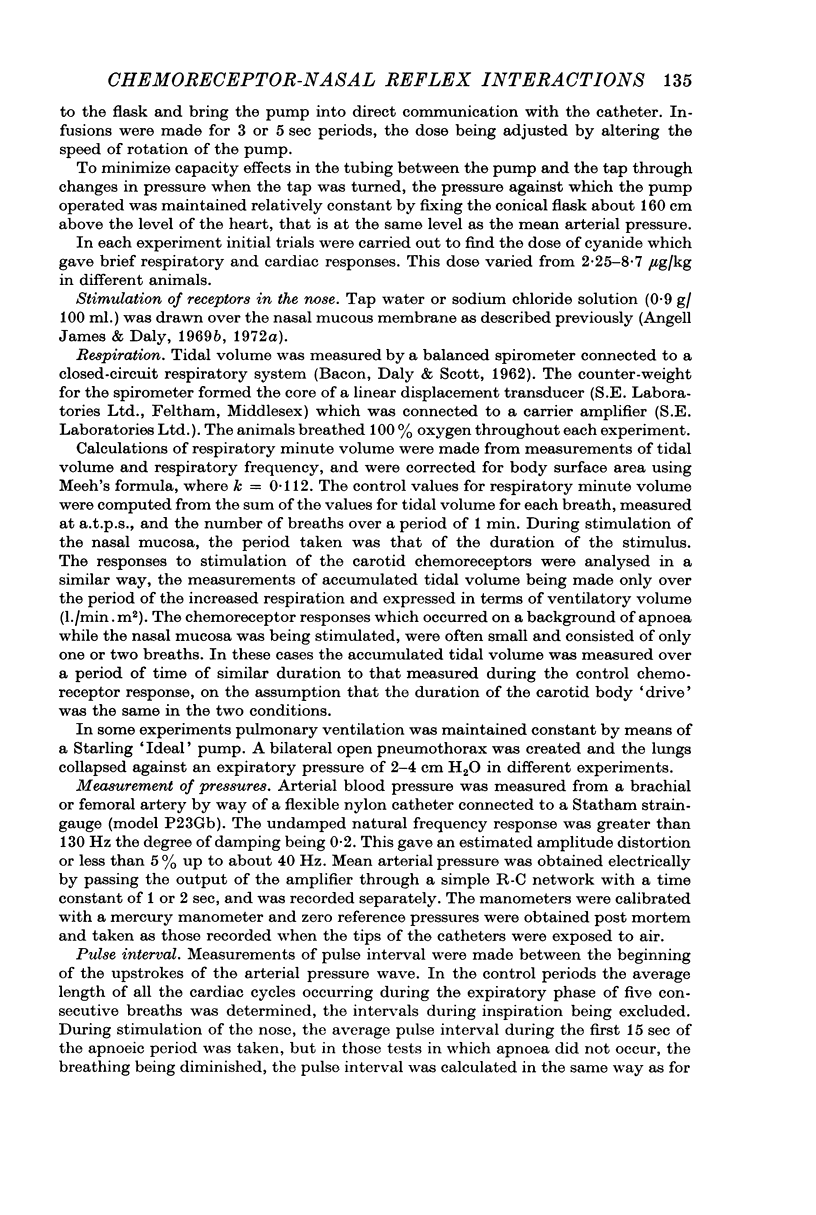
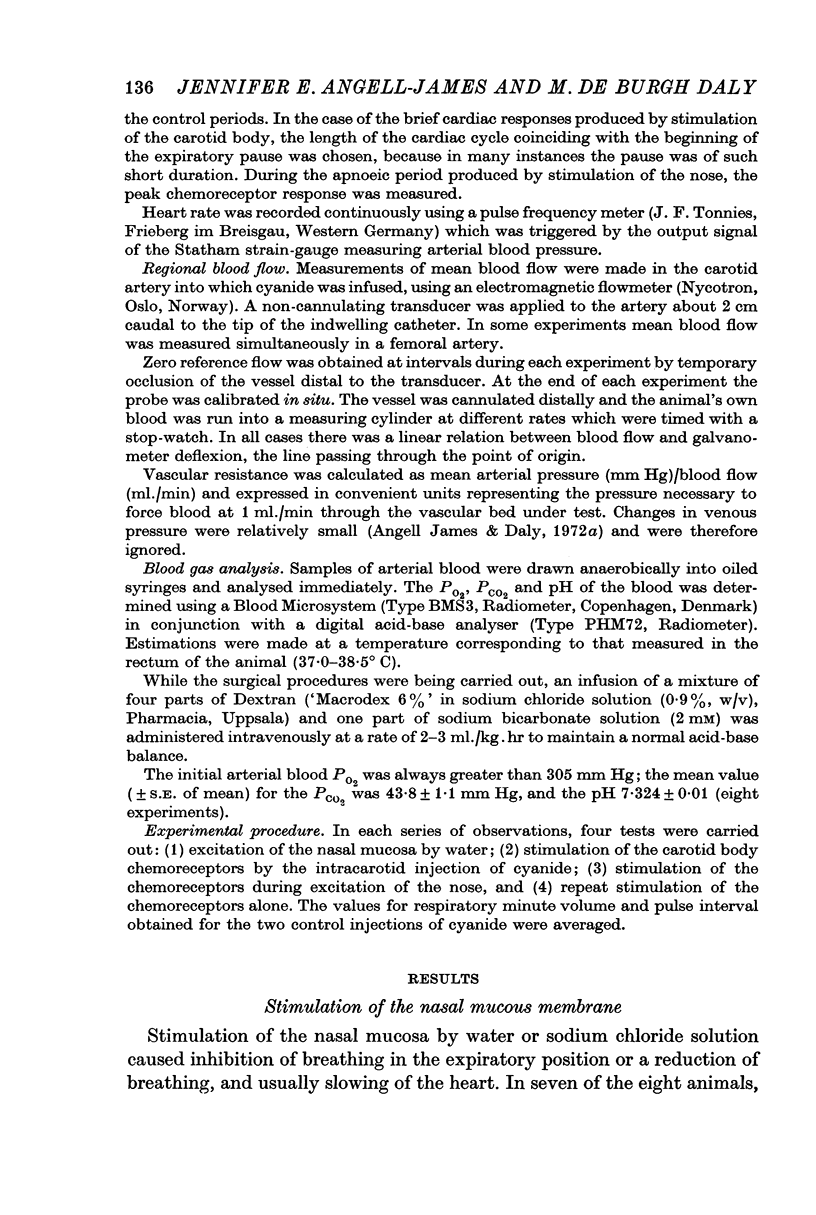

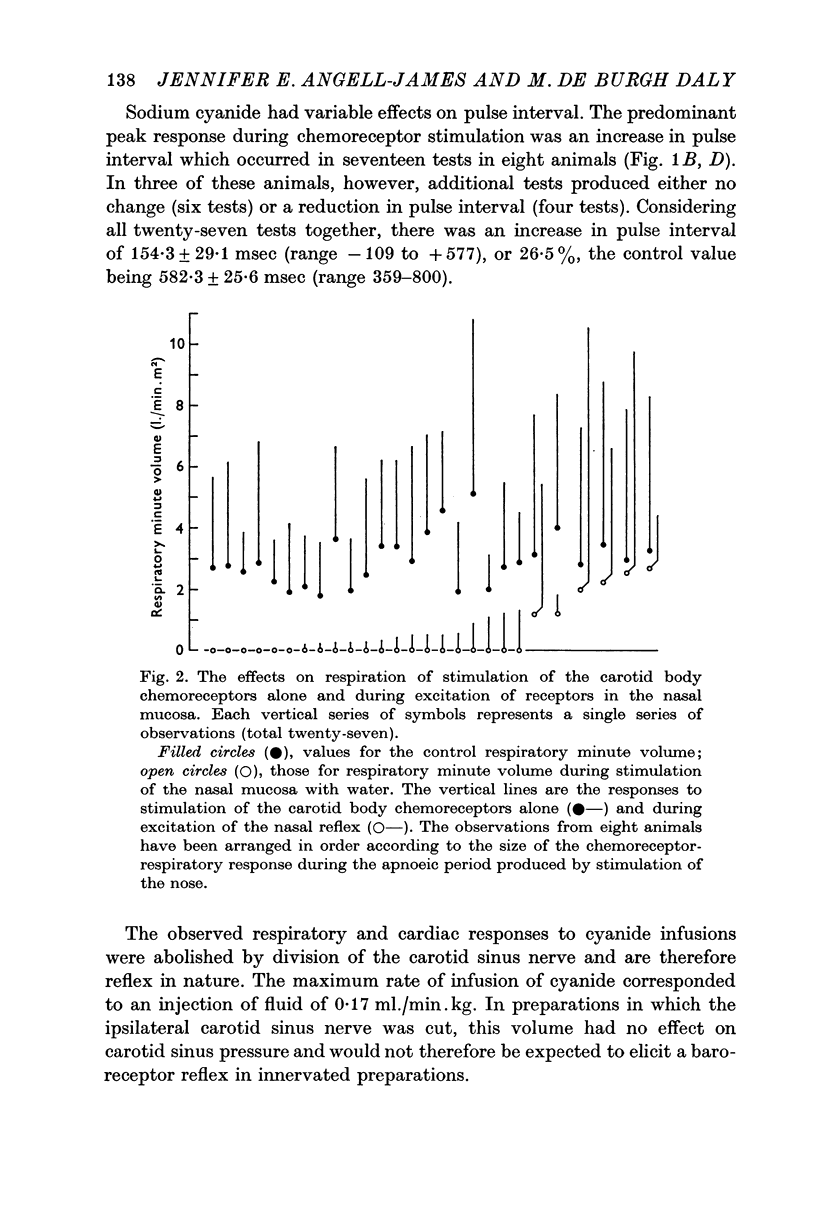

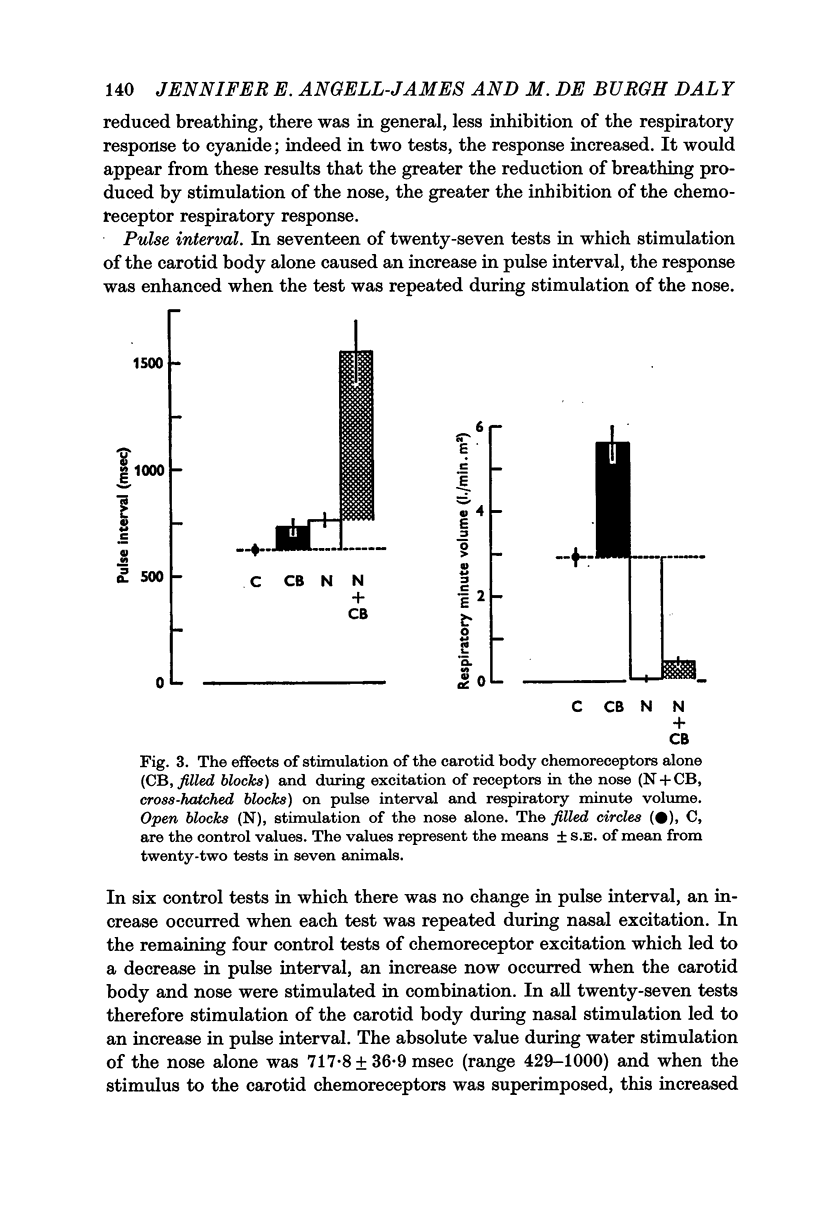
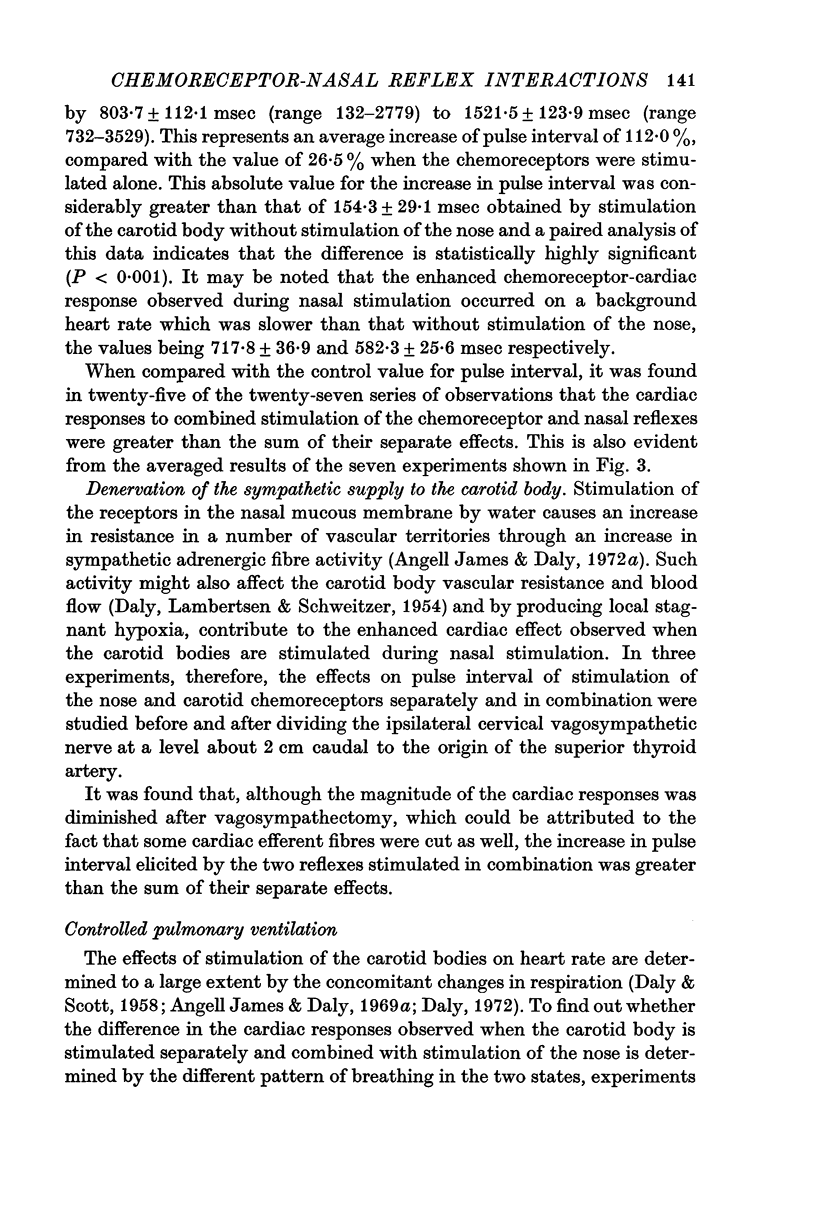
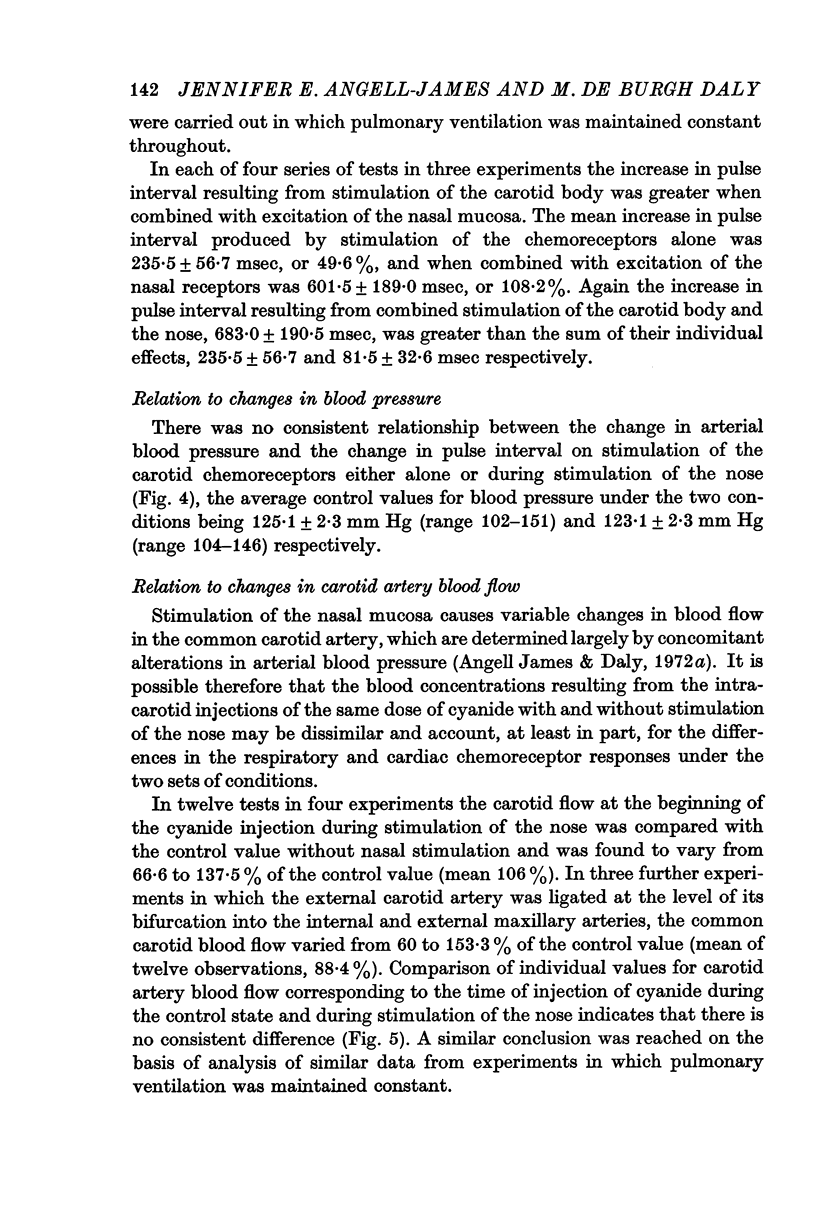
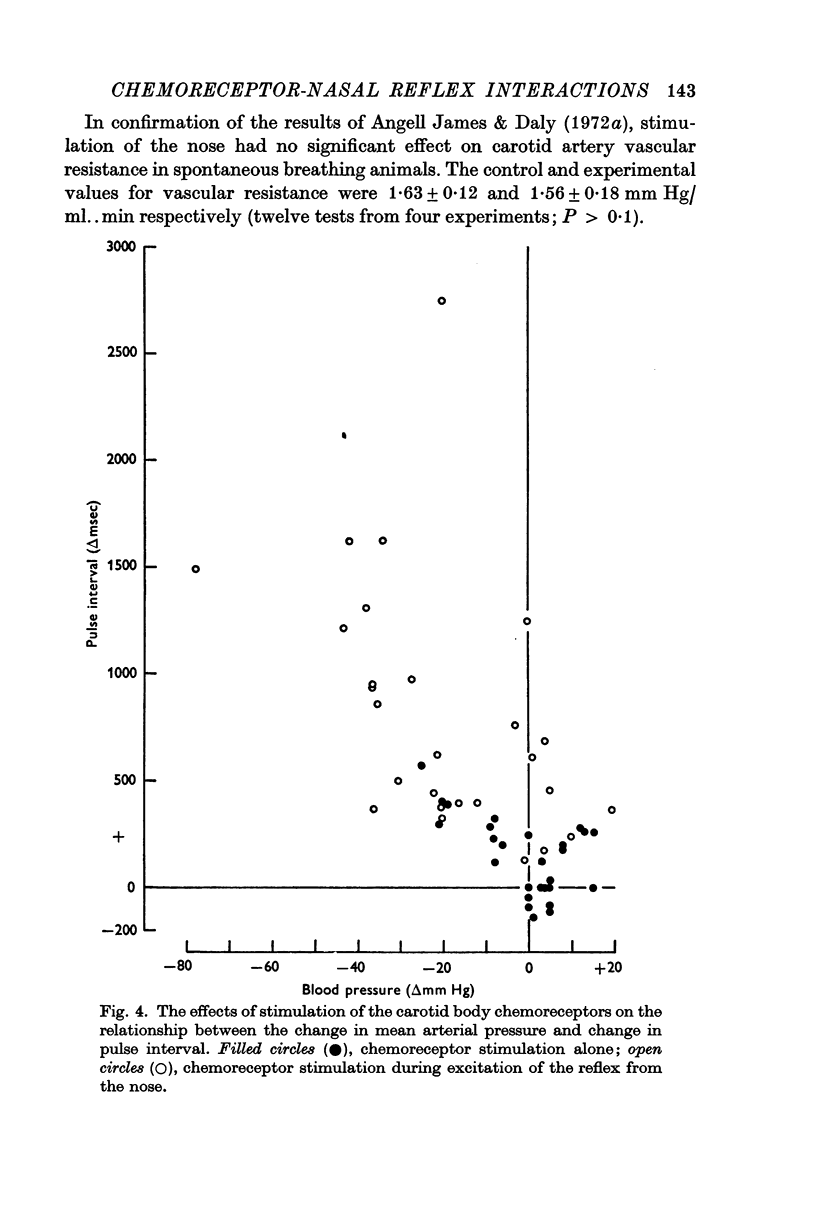
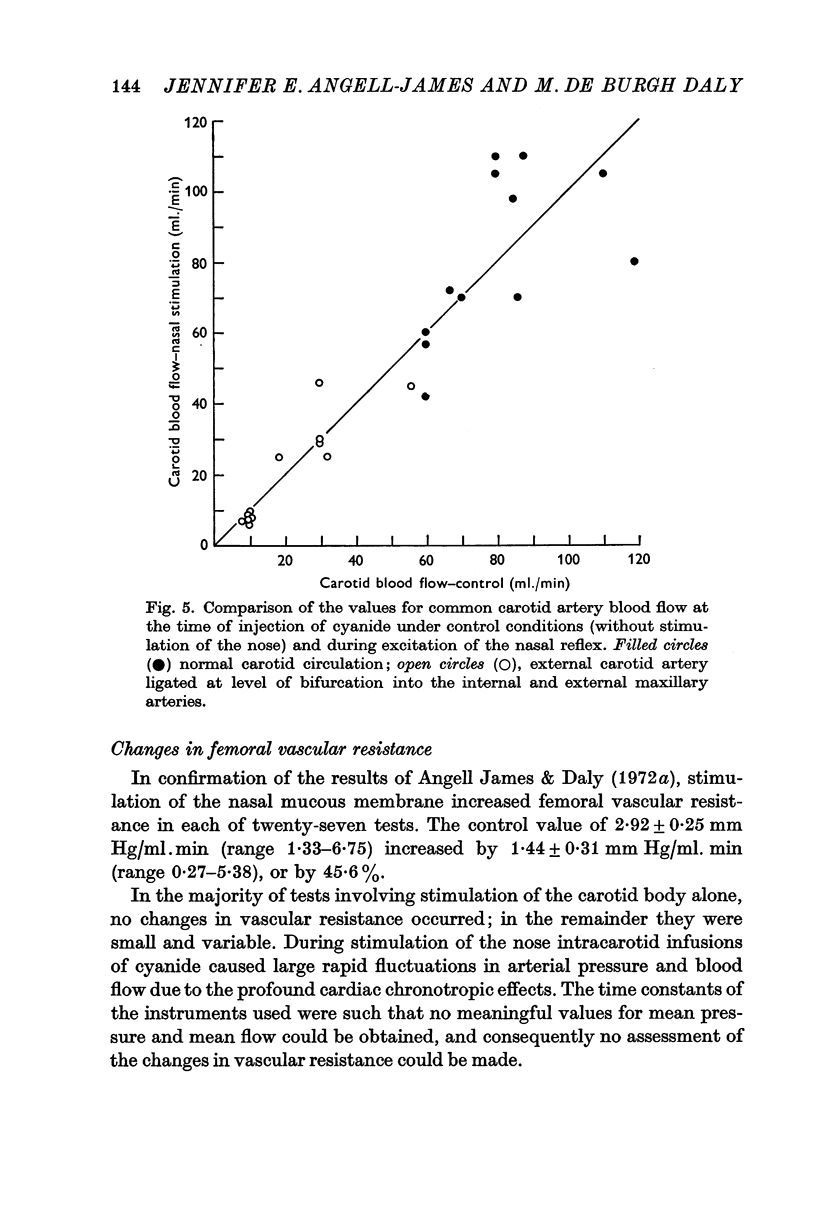
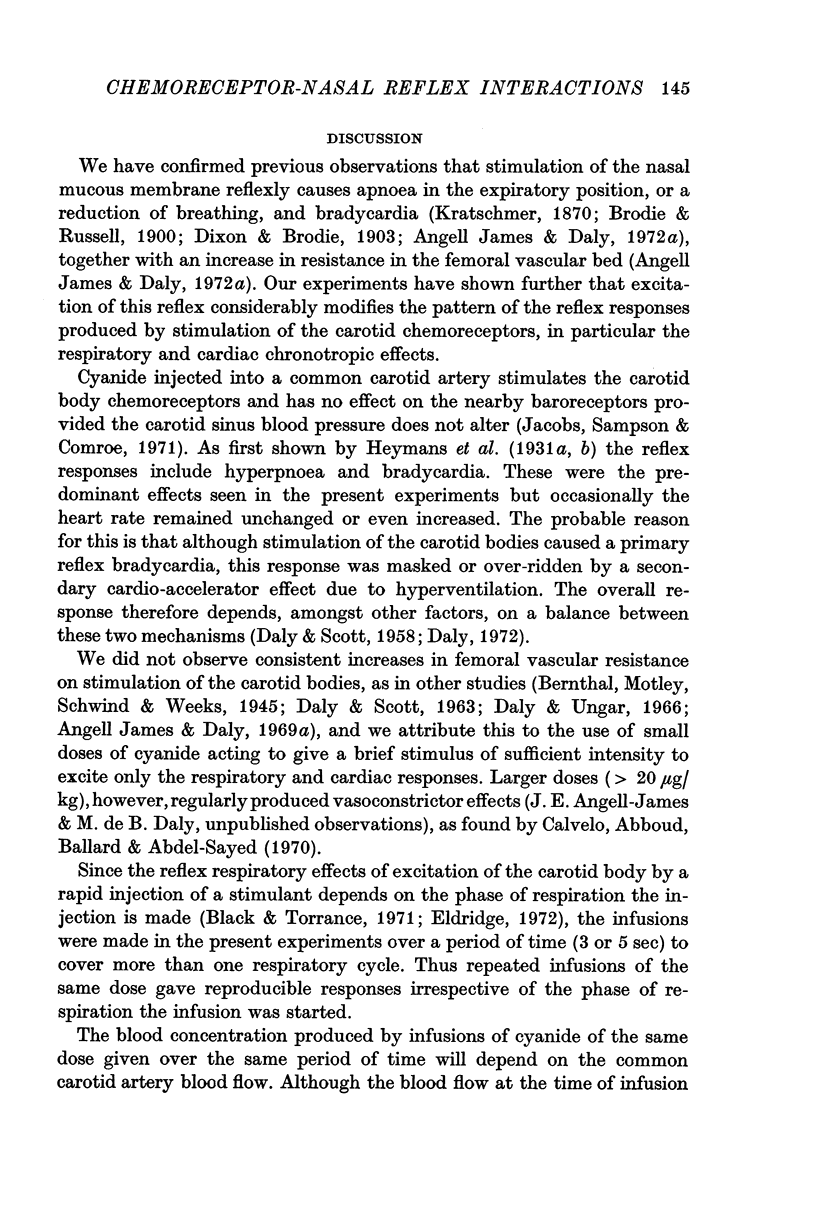
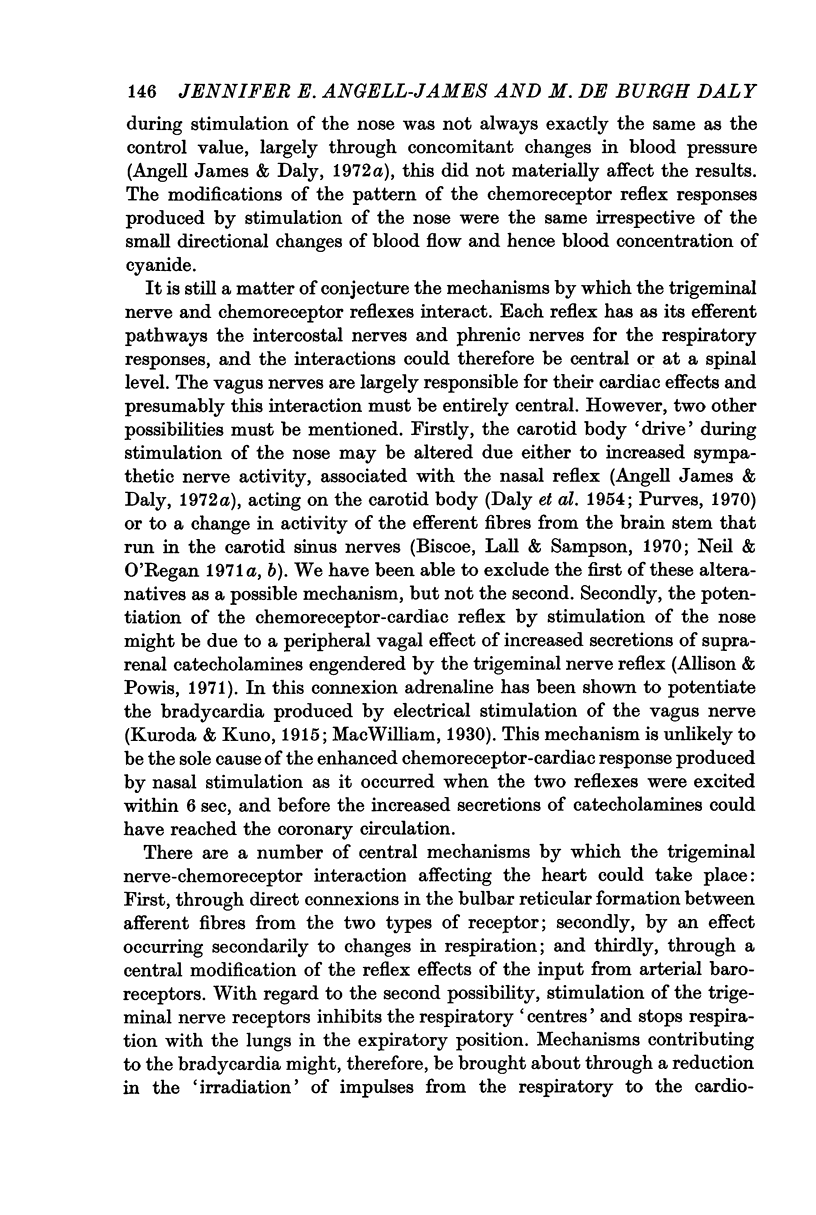
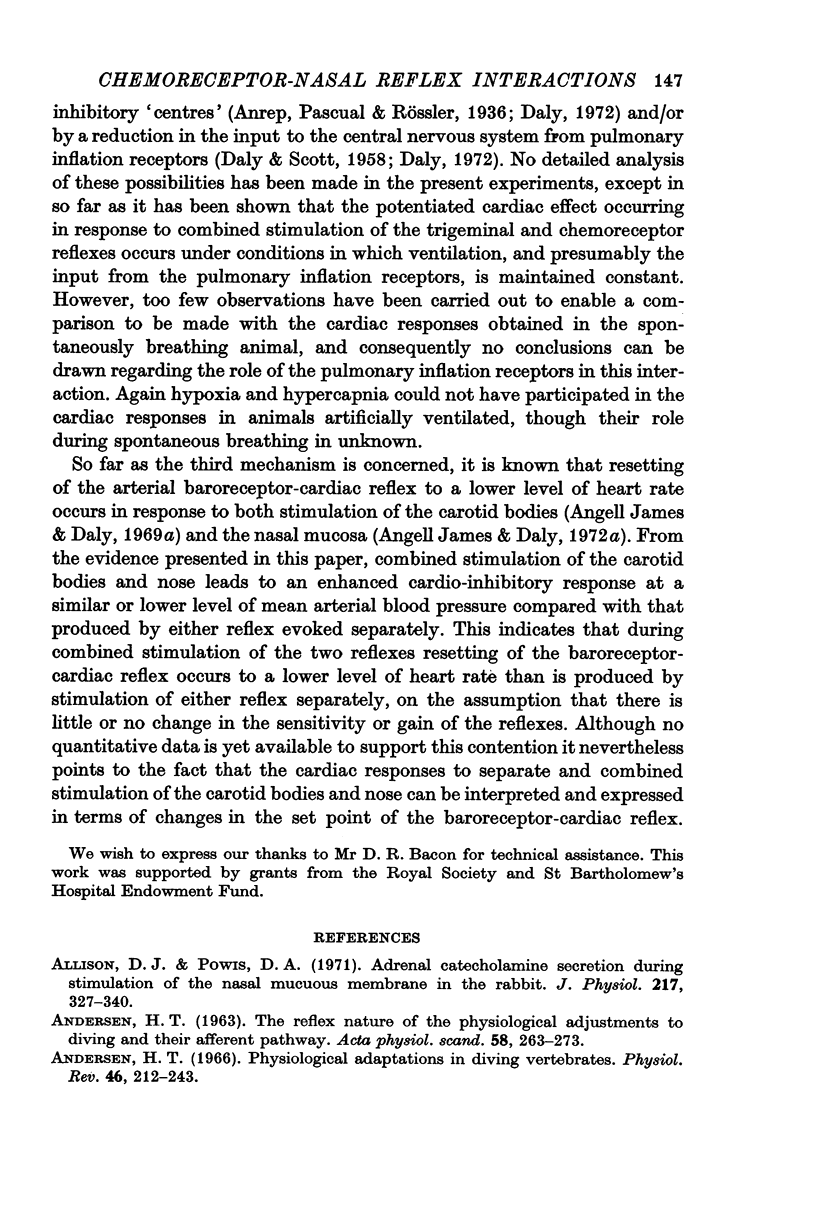
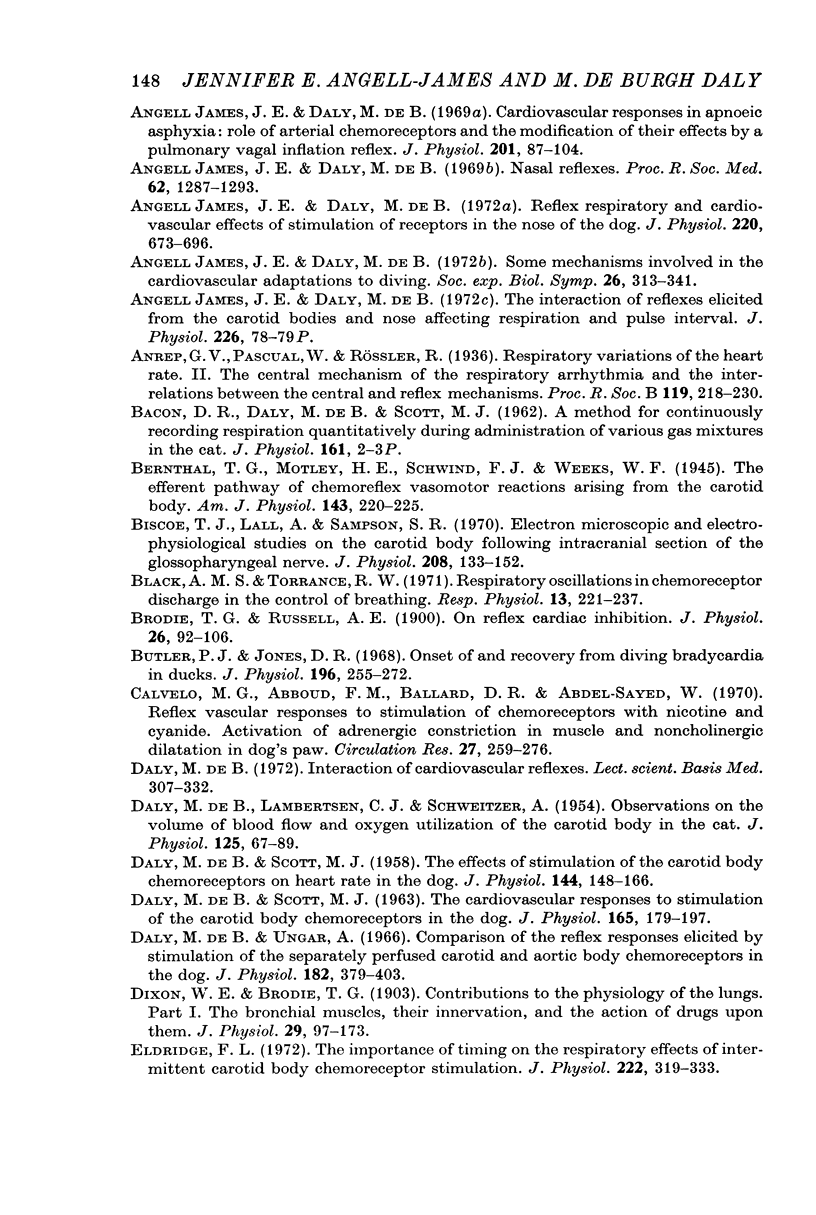
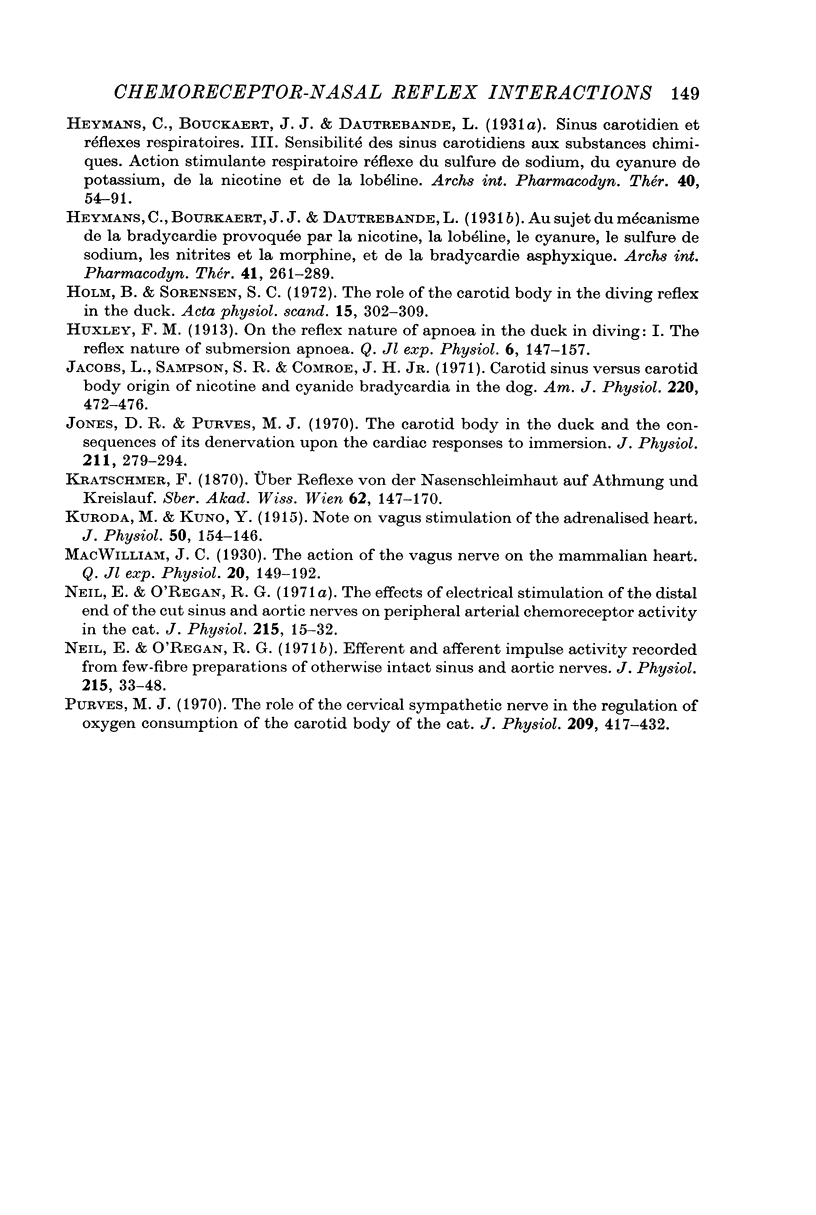
Selected References
These references are in PubMed. This may not be the complete list of references from this article.
- ANDERSEN H. T. The reflex nature of the physiological adjustments to diving and their afferent pathway. Acta Physiol Scand. 1963 Jun-Jul;58:263–273. doi: 10.1111/j.1748-1716.1963.tb02648.x. [DOI] [PubMed] [Google Scholar]
- Allison D. J., Powis D. A. Adrenal catecholamine secretion during stimulation of the nasal mucous membrane in the rabbit. J Physiol. 1971 Sep;217(2):327–339. doi: 10.1113/jphysiol.1971.sp009574. [DOI] [PMC free article] [PubMed] [Google Scholar]
- Andersen H. T. Physiological adaptations in diving vertebrates. Physiol Rev. 1966 Apr;46(2):212–243. doi: 10.1152/physrev.1966.46.2.212. [DOI] [PubMed] [Google Scholar]
- Angell James J. E., Daly M. de B. Nasal reflexes. Proc R Soc Med. 1969 Dec 12;62(12):1287–1293. doi: 10.1177/003591576906201238. [DOI] [PMC free article] [PubMed] [Google Scholar]
- Biscoe T. J., Lall A., Sampson S. R. Electron microscopic and electrophysiological studies on the carotid body following intracranial section of the glossopharyngeal nerve. J Physiol. 1970 May;208(1):133–152. doi: 10.1113/jphysiol.1970.sp009110. [DOI] [PMC free article] [PubMed] [Google Scholar]
- Brodie T. G. On reflex cardiac inhibition. J Physiol. 1900 Dec 31;26(1-2):92–106. doi: 10.1113/jphysiol.1900.sp000824. [DOI] [PMC free article] [PubMed] [Google Scholar]
- Butler P. J., Jones D. R. Onset of and recovery from diving bradycardia in ducks. J Physiol. 1968 May;196(2):255–272. doi: 10.1113/jphysiol.1968.sp008505. [DOI] [PMC free article] [PubMed] [Google Scholar]
- Calvelo M. G., Abboud F. M., Ballard D. R., Abdel-Sayed W. Reflex vascular responses to stimulation of chemoreceptors with nicotine and cyanide. Activation of adrenergic constriction in muscle and noncholinergic dilatation in dog's paw. Circ Res. 1970 Aug;27(2):259–276. doi: 10.1161/01.res.27.2.259. [DOI] [PubMed] [Google Scholar]
- DALY M. D., SCOTT M. J. The cardiovascular responses to stimulation of the carotid body chemoreceptors in the dog. J Physiol. 1963 Jan;165:179–197. doi: 10.1113/jphysiol.1963.sp007051. [DOI] [PMC free article] [PubMed] [Google Scholar]
- DE BURGH DALY M., LAMBERTSEN C. J., SCHWEITZER A. Observations on the volume of blood flow and oxygen utilization of the carotid body in the cat. J Physiol. 1954 Jul 28;125(1):67–89. doi: 10.1113/jphysiol.1954.sp005143. [DOI] [PMC free article] [PubMed] [Google Scholar]
- DE DALY M. B., SCOTT M. J. The effects of stimulation of the carotid body chemoreceptors on heart rate in the dog. J Physiol. 1958 Nov 10;144(1):148–166. doi: 10.1113/jphysiol.1958.sp006092. [DOI] [PMC free article] [PubMed] [Google Scholar]
- Daly M., Ungar A. Comparison of the reflex responses elicited by stimulation of the separately perfused carotid and aortic body chemoreceptors in the dog. J Physiol. 1966 Jan;182(2):379–403. doi: 10.1113/jphysiol.1966.sp007828. [DOI] [PMC free article] [PubMed] [Google Scholar]
- Dixon W. E. Contributions to the physiology of the lungs: Part I. The bronchial muscles, their innervation, and the action of drugs upon them. J Physiol. 1903 Mar 16;29(2):97–173. doi: 10.1113/jphysiol.1903.sp000947. [DOI] [PMC free article] [PubMed] [Google Scholar]
- Eldridge F. L. The importance of timing on the respiratory effects of intermittent carotid body chemoreceptor stimulation. J Physiol. 1972 Apr;222(2):319–333. doi: 10.1113/jphysiol.1972.sp009799. [DOI] [PMC free article] [PubMed] [Google Scholar]
- Holm B., Sorensen S. C. The role of the carotid body in the diving reflex in the duck. Respir Physiol. 1972 Jul;15(3):302–309. doi: 10.1016/0034-5687(72)90071-0. [DOI] [PubMed] [Google Scholar]
- Jacobs L., Sampson S. R., Comroe J. H., Jr Carotid sinus versus carotid body origin of nicotine and cyanide bradycardia in the dog. Am J Physiol. 1971 Feb;220(2):472–476. doi: 10.1152/ajplegacy.1971.220.2.472. [DOI] [PubMed] [Google Scholar]
- James J. E., Daly M. de B. Cardiovascular responses in apnoeic asphyxia: role of arterial chemoreceptors and the modification of their effects by a pulmonary vagal inflation reflex. J Physiol. 1969 Mar;201(1):87–104. doi: 10.1113/jphysiol.1969.sp008744. [DOI] [PMC free article] [PubMed] [Google Scholar]
- James J. E., De Burgh Daly M. Reflex respiratory and cardiovascular effects of stimulation of receptors in the nose of the dog. J Physiol. 1972 Feb;220(3):673–696. doi: 10.1113/jphysiol.1972.sp009729. [DOI] [PMC free article] [PubMed] [Google Scholar]
- James J. E., De Burgh Daly M. Some mechanisms involved in the cardiovascular adaptations to diving. Symp Soc Exp Biol. 1972;26:313–341. [PubMed] [Google Scholar]
- Jones D. R., Purves M. J. The carotid body in the duck and the consequences of its denervation upon the cardiac responses to immersion. J Physiol. 1970 Dec;211(2):279–294. doi: 10.1113/jphysiol.1970.sp009279. [DOI] [PMC free article] [PubMed] [Google Scholar]
- Kuroda M., Kuno Y. Note on vagus stimulation of the adrenalised heart. J Physiol. 1915 Dec 24;50(2):154–156. doi: 10.1113/jphysiol.1915.sp001744. [DOI] [PMC free article] [PubMed] [Google Scholar]
- Neil E., O'Regan R. G. The effects of electrical stimulation of the distal end of the cut sinus and aortic nerves on peripheral arterial chemoreceptor activity in the cat. J Physiol. 1971 May;215(1):15–32. doi: 10.1113/jphysiol.1971.sp009455. [DOI] [PMC free article] [PubMed] [Google Scholar]
- Purves M. J. The role of the cervical sympathetic nerve in the regulation of oxygen consumption of the carotid body of the cat. J Physiol. 1970 Aug;209(2):417–431. doi: 10.1113/jphysiol.1970.sp009172. [DOI] [PMC free article] [PubMed] [Google Scholar]
- de Burgh Daly M. Interaction of cardiovascular reflexes. Sci Basis Med Annu Rev. 1972:307–332. [PubMed] [Google Scholar]


